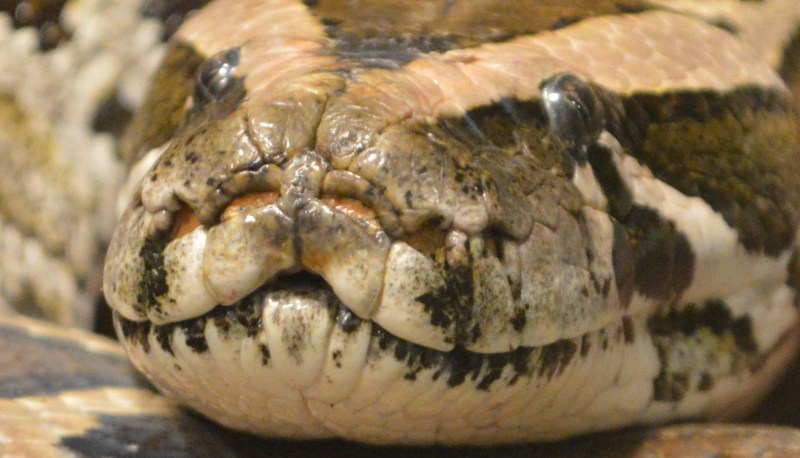[Chris Grill] got his hands on a pet boa constrictor, which requires a fairly strict temperature controlled environment. Its enclosure needs to have a consistent temperature throughout, or the snake could have trouble regulating its body temperature. [Chris] wanted to keep tabs on the temp and grabbed a few TTF-103 thermistors and an Arduino Yun, which allowed him to log the temperature on each side of the enclosure. He used some code to get the temp reading to the linux side of an Arduino Yun, and then used jpgraph, a PHP graphing library, to display the results.
 But that wasn’t good enough. Why not get a little fancy and have Amazon’s Echo read the temps back when you ask! Getting it setup was not so bad thanks to Amazon’s well documented steps to get custom commands set up.
But that wasn’t good enough. Why not get a little fancy and have Amazon’s Echo read the temps back when you ask! Getting it setup was not so bad thanks to Amazon’s well documented steps to get custom commands set up.
He eventually lost the battle to get the Echo to talk to the web server on the Yun due to SSL issues, but he found an existing workaround by using a proxy.















please, tell me more about how to integrate closed/proprietary microphones into my home!
If you were being serious.
I didn’t read the page fully but have a look.
https://home-assistant.io/components/alexa/
“Chris Grill] got his hands on a pet boa constrictor, which requires a fairly strict temperature controlled environment.”
Isn’t released pet boa constrictors a problem in places like Florida? Seems they don’t have a problem with the temperature there.
I also thought: How could these animals have survived the last thousands or millions of years without internet connected temperature regulation?
– Alexa, how old are you?!?
A lot of animals have problems in captivity that they don’t have in the wild, probably because captivity stresses them in multiple ways, making them more prone to health issues.
Burmese pythons in Florida, a state that is at a fairly comfortable temperature outside for some snakes.
And it’s pretty much beginners buying too big of a snake and dumping it when they can’t care for it and realize that these animals really do get big.
Didn’t know it spoke parseltongue…
I have one of those snakes since about 10 years and no logic is controlling the temperature.
The trick is to have a large enough enclosure and a temperature gradient in there.
Guess what happens – the snake regulates it’s body temperature by moving around.
Also add a water source and you actually get to see your snake moving and not just sitting in the hiding place.
I’m fine with Alexa giving the current temperature or status of the system (as it is in the details).
However – clickbait headline! Handing over the tempermal regulation of the system to work through Alexa is really risky – “how to build a system with the most single points of failure?”. Looks like [Chris Grill] went the sensible way and just the headline is exagerating
Now, this particular snake species hardly even requires a thermostat at all, and depending on the room temperature maybe not even any heating.
What’s more interesting with other species would be the humidity. Tree pythons for example, especially the juveniles, require a relatively stable humidity and temperature to thrive, and usually they are reared in smaller enclosures, which are in general more difficult to control.
Now if only someone could figure out how do some of those “lower” animals survive being frozen, that would be very useful for humans. I was recently in a forest, and as I ruffled some leaves, I’ve seen some sort of an insect just fly away from there. It was about -5 C.
We already know that, it’s just that the only sensible way would be very drastic DNA alteration, we’ve evolved as warm-blooded creatures with all the pros and cons that it has, changing 10s of million years of evolution is hard.
The main thing would be to prevent actual freezing of tissue and body fluids, the next big one would be transitioning between frozen/thawed/fully warmed states without damage.
You’d be looking at a Moon-landing scale project with a LOT of human testing (and deaths…)